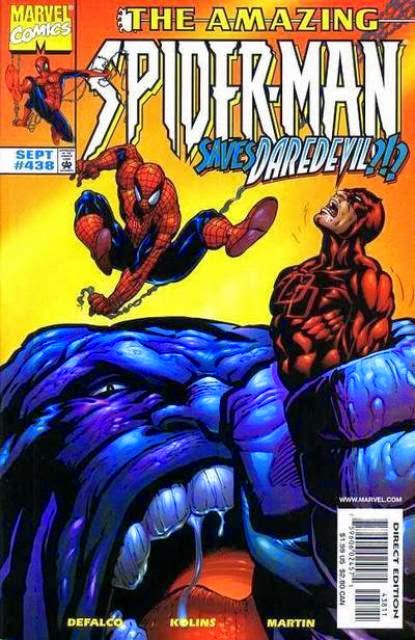Shall We Rise Again?
Credits: Chris Claremont (writer), Al Rio (penciler), Bob McLeod (inker), Tom Orzechowski (letterer), Guru eFX (colorist)
Summary: Tiberius leads the Red Skull’s former army against Selene, the New Mutants, and the Nova Roman freedom fighters. The fighters turn against Selene when Tiberius releases a wave of energy that forces them to join his side. During the battle, Warlock slips away to free Sunspot from prison, but Tiberius possesses Sunspot as soon as he enters the fight. The tide is turned when Cypher breaks from his mental conditioning and attacks Tiberius. While he’s weakened, the Red Skull fatally shoots Tiberius from his escaping jet. Magma and the citizens are freed from Tiberius’ control, and the X-Men soon arrive with Magma’s father. Later, at the X-Men’s mansion, Warlock uses his techno-organic powers to purge Cypher’s body of poison and return him to normal. Shadowcat comments that the two are truly brothers now.
Continuity Notes: Tiberius’ powers are never explained, but he’s seemingly able to release an energy that can possess and/or brainwash people. He also exhibits what appears to be pyrokinetic powers during his fight with Selene.
Review: So…that was not a satisfying conclusion. There are a thousand holes that can be punched into this closing chapter, and for brevity’s sake, I’ll list them in the bullet point format.
- Going back to the previous issue, where did Warlock disappear to after he encouraged Cypher to make his move against the Red Skull? I assumed this would be resolved in the final chapter, but instead the story picks up (presumably) days later, as Tiberius has commandeered the Red Skull’s army and launched an attack on the rebels and the New Mutants. What did Warlock have to do last issue that was so important he couldn’t help Cypher out?
- While on the subject, why does Warlock wait until now to free Sunspot? Following the timeline of the story, it seems as if he could’ve done this days ago.
- More mind control? I recall Claremont saying that he was avoiding mind control as a plot device while writing the early issues of X-Men Forever. I didn’t expect him to totally kick the habit, but I didn’t think he would have two separate villains use the same gimmick in two different circumstances in one miniseries, either.
- What’s the deal with Tiberius anyway? If he’s so powerful, why did he allow the Red Skull to take him captive in the first place?
- The Red Skull is brushed out of the story as an afterthought, which is a shame since Claremont never really took advantage of the character during the mini. His justification for simply leaving Nova Roma implies that he actually respects the New Mutants as opponents and is going to allow them this victory, which is wildly out of character.
- And I’m guessing the Red Skull is somehow the Marvel Universe’s greatest sharpshooter, given that he’s able to nail Tiberius with one fatal shot while hanging out of the side of a passing jet.
- I have no real complaints about Al Rio’s art, and Bob McLeod does a great job keeping the cast recognizable and on-model. However, there is an utterly random page dedicated to a pissed Warlock, emerging from the ground after being struck by the brainwashed Sunspot, that isn’t paid off at all. I don’t know what happened to the storytelling here.
- Another mind control gripe…this is a story that clearly should be about Magma, yet she’s been brainwashed since the second issue. (By two separate characters, no less.) She’s not allowed any real reaction to the events of the story, even though she’s the character with the deepest emotional investment in the entire affair.
- Selene, somehow, has redeemed herself to Amara and actually has a sweet family reunion with Magma and Senator Aquilla in the final pages. That’s just insane. The previous issues have fleshed out Selene as a character, true, but her motivation for helping Nova Roma remains pure selfishness. Even if the story successfully sold the idea of a reformed Selene (something I wouldn’t want to see anyway), Magma hasn’t been conscious to see it. Why has she suddenly dropped her blood feud against her grandmother?
- Remember the scene featuring Wolfsbane near death in the first issue, with Mirage fighting to protect her from Hela? Apparently, I’m the only one, since it’s not resolved in the final chapter.
Going through the list of questionable decisions and outright mistakes, it’s difficult to pretend that anything in the final issue is going to save this plot. I will say that the New Mutants still feel like the characters Claremont wrote back in the ‘80s, and I’m glad some of the more outrageous elements from X-Men Forever haven’t been repeated here. (Captain America wasn’t killed off, for example.) And the ending with Warlock and Cypher is a decent example of an old Jim Shooter “I can’t, yet I must” conflict and a Claremontian bonding scene. But, wow, what a poorly conceived conclusion. If you’re a fan of the original New Mutants series, I would argue the miniseries is still worth your time, but you’re better off if you don’t think too hard during the final twenty pages.













